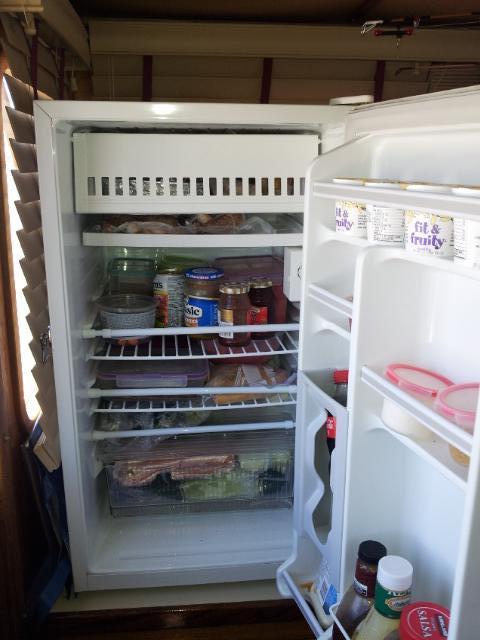Peter. WRT this comment. Do you follow James Hamilton's blog?
Yes, I follow the blog and have talked to him about his modification. Our objectives are similar, and really two-fold:
1) be able to run moderate 240V loads while underway with out the generator. Our alternators can support about 7kw, so that's our max sustained load while not draining the batteries. We don't want to run that way all the time, and I'd actually like to stay more around 5kw just to keep the current levels down. But that will support cloths washing and an AC unit or two, though probably not at the same time. But I figure if we are in heavy need of AC, I'll just run the generator.
2) More seamless operation with 50hz shore power. This isn't an issue until we leave north america, but that time is coming. But the idea is to be able to run 240V appliances that require 60hz off the inverter, and take shore power in via charger(s) that are frequency and voltage insensitive. Some of our 240V appliances can run on 50 or 60hz, like our how water heater and AC. But others are locked into 60hz like the washer and dryer and the oven. Bringing power in at 50hz and converting it to DC via a charger, then inverting to 60 hz 240V allows those appliances to run seamlessly. You just need to be sure your shore chargers keep up with the load, on average.
A third possible feature, but one I don't think we can take advantage of, is regulating/limiting your shore power draw. Lots of places only have 16A@230V, so about 3.6kw. If you limit the shore power draw to 16A on the charger, then you can avoid nuisance trips of breakers while still consuming more than 3.6kw on board. Your average load of course needs to be well under 3.6kw, but the inverter and batteries can handle short term loads in excess of the shore power limit, providing much more flexibility on board. We will be able to do some of this, but not all of our 240V loads will run through the inverter, the AC in particular, so we don't have a single device that can regulate the full load.
Anyway, this is getting pretty far off topic, so maybe we can pick it up in another thread if there is interest...



